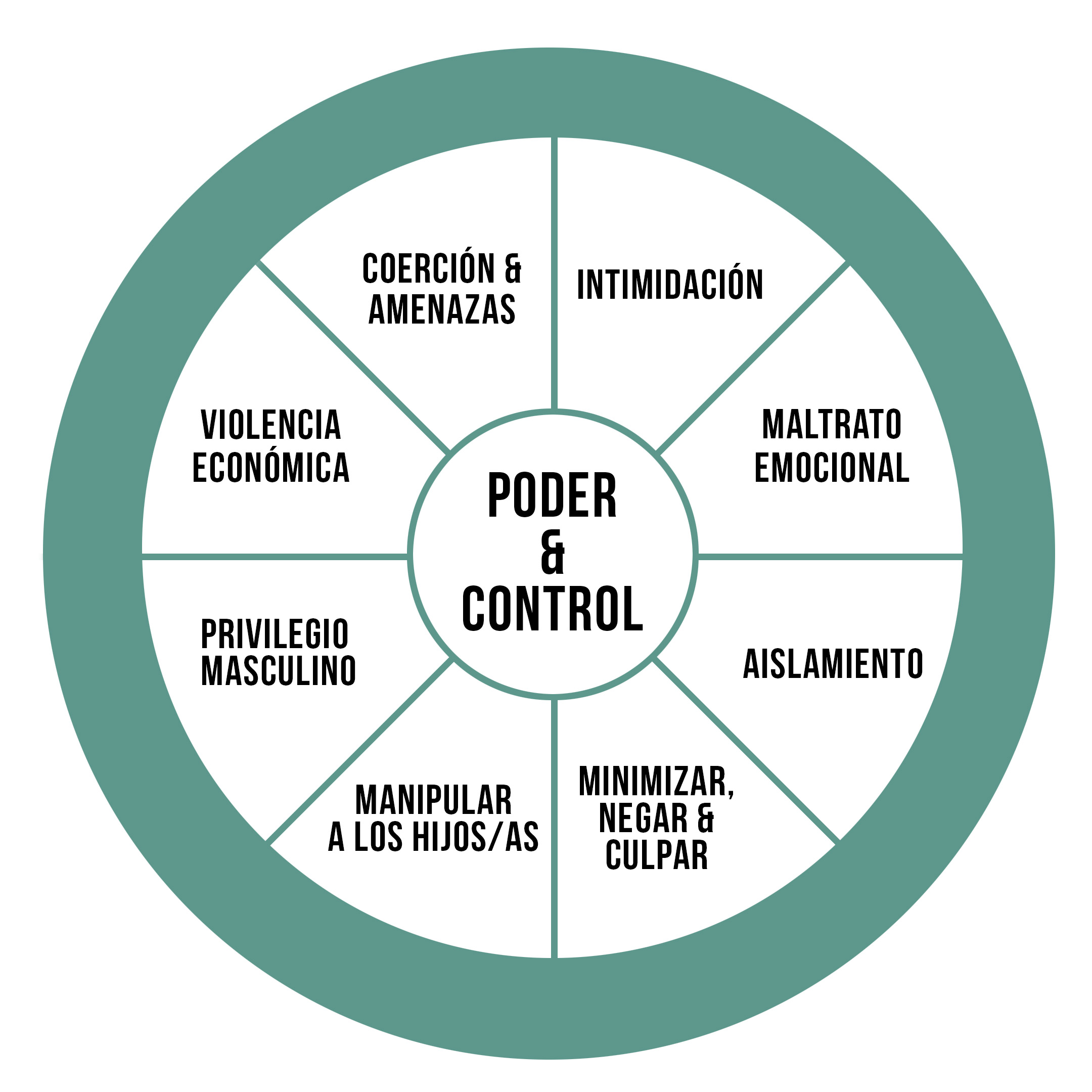
(The new National Agreement pact recognizes economic violence as a form of intimate partner violence)
(After several months of working together, all the political parties except right-wing Vox have agreed on a report, witnessed by our newspaper, with more than 400 points and an increase of 500 million of euros yearly in the budget, which can still be changed and will have to be voted twice to be definitive.)
The proposal mentioned in the news article, which has not yet been translated into legal changes but hopefully will be, serves to highlight that violence against women takes multiple forms. It is not just about physical assaults or murders; it is much broader and often suffered in silence or even justified.
Psychologists and psychiatrists hold a privileged position when it comes to raising awareness among victims (or rather, survivors) and perhaps preventing future violence. We have an ethical obligation to make these issues known to society as a whole, with the goal of preventing violence against women in all its forms.
Thus, these lines serve to introduce the so-called or «Power and Control Wheel» or «Wheel of Abuse,» which clearly illustrates the types of violence and their manifestations.
The Wheel

Adapted from: https://www.theduluthmodel.org/wp-content/uploads/2017/03/PowerandControl.pdf
This wheel was created by the Domestic Abuse Intervention Project in Duluth, Minnesota, in 1984 to help describe violence to victims, perpetrators, judicial professionals, and society at large. The project gathered the terrifying stories of the women they assisted and documented the many ways in which men exercised violence. At the center of the wheel is power and control, the spokes represent the different behaviors that reinforce this power, and violence—whether physical or sexual—forms the rim of the wheel, as it shapes and holds everything else together.
Below are examples—by no means exhaustive—of all these behaviors, with the aim of making them easier to recognize, name, and combat, both in ourselves and in those we know, and ultimately to consign these sexist behaviors to the sewers of History.
Intimidation
To intimidate, according to the RAE dictionary, means «to cause or instill fear, to inhibit,» and this is precisely the abuser’s goal.
«Whenever I said something he didn’t like, he would look at me in a certain way, and I already knew what was coming next.»
Intimidation is achieved through looks and gestures (a technique well-exploited by actors), actions, breaking objects—especially those belonging to the woman—mistreating pets, or displaying weapons (firearms or knives, depending on the country).
The goal, of course, is for the victim to live in a constant state of fear, paralyzing her and preventing her from rebelling—just as all the world’s dictators know so well.
Emotional abuse
«He humiliated me in front of his friends, calling me useless, saying I couldn’t do anything right. Then he twisted it around, making me feel it was my fault—that I had provoked him by dropping a glass or some other trivial thing. Or he simply denied ever having insulted me.»
Emotional abuse takes many forms, some of them quite insidious or seemingly harmless:
«It’s true, though—you always drop things.»
«You have all these degrees, but you don’t know how to run a household.»
These remarks gradually sink into the victim, making her believe them and doubt herself, as seen in the well-known «gaslighting» phenomenon (which, let’s remember, originates from a 1944 film—though millennials may believe they discovered it, there is hardly anything new under the sun when it comes to intimate partner’s violence).
Isolation
«Little by little, he pulled me away from my family, saying they didn’t truly love me, that he was all the family I needed.» «If I worked late, I had to video call him to prove I was really at work.» «He forced me to give him my Instagram and TikTok passwords, meticulously reviewing everything I posted, checking who liked my posts, and blocking anyone he didn’t approve of.»
The abuser controls the woman’s actions, her social interactions—both in real life and online—where she goes, even what she reads. He may even restrict her movements outside the home and justify his actions with jealousy: «You know how I am, why do you insist on wanting to go out with other people?».

Minimizing, denying and blaming
«He told me that wasn’t abuse, that he was just being honest when he humiliated and insulted me because I was useless.» «‘You’re just asking for it’ was his favorite phrase.»
The abuser repeatedly denies the abuse or downplays it: «What are you complaining about? It was just a little slap, nothing serious.» He shifts the blame onto the victim, portraying himself (and often extending this to «real men» in general) as a helpless bag of hormones who reacts instinctively to so-called provocations, with no ability to reflect.
Sadly, these justifications are widespread in society, sometimes wrapped in paternalistic rhetoric: «It’s for her own good, poor thing.» This exposes the deeply ingrained view of women as weak, fundamentally different from men, and in need of protection—even against their own will.
Using children
From the almost comical portrayals in sitcoms—»Tell your mother to pass me the salt»—to the most extreme cases of vicarious violence, where children are murdered to inflict eternal pain on the mother, it is clear that abusers know how to strike where it hurts most. They manipulate the mother’s guilt, threaten to «take the children away,» use visitation rights as an opportunity to harass her, and manipulate them—actions that have even been legitimized by certain psychiatric sectors (such as the now-discredited Parental Alienation Syndrome).
Male privilege
«In his free time, he writes articles that get paid, so it’s only natural that I have to handle all the housework when I get home from work.» «He said I was his wife, and to him, that meant his maid.» The man defines and enforces rigid, unchanging gender roles, acting as the lord of the castle, imposing his own rules. And if this seems outdated, as these chilling examples from traditional proverbs show: «Women should be seen and not heard.» «Keep your woman barefoot and pregnant.», let’s think on the rise of the tradwife movement and the resurgence of outdated debates on household chores, childcare, and career choices.
Economic Abuse
The news article that introduced this text highlights one of the most common forms of violence against women: financial abuse. This takes various forms, such as giving her a monthly allowance (like a child’s pocket money), keeping her in the dark about family finances, preventing access to accounts, forcing her to ask for money, prohibiting her from working, even taking out loans in her name, leaving her in debt even after divorce.
It is also striking how the abusers forget who the alimony money is for, withholding payments as leverage to exert control.
Coercion and threats
«He told me if I wore that skirt to class again, he’d take it away.» «Yesterday, I got a WhatsApp from him—if I leave him, he’ll kill himself. How can I do that?» «If you don’t drop the charges, I’ll kill your dog.»
Threats of harm, abandonment, murder, involving social services, forcing her to commit crimes—anything goes for the abuser, including suicide threats to induce guilt.

About the author
Alicia Fraile is a psychiatrist at SINEWS, Madrid, with more than 20 years of experience in general clinical psychiatry. She has worked in brain damage, Mental Health Centers, occupational psychiatry, work accidents and their repercussion in psychiatry (post-traumatic stress disorder, adaptive disorders), patients with chronic health problems and of course with the most frequent pictures of our field: anxiety, depression, insomnia, obsessive-compulsive disorder.
Foto de Darina Belonogova: https://www.pexels.com/es-es/foto/persona-mujer-cama-sentado-7208920/
Foto de Liza Summer: https://www.pexels.com/es-es/foto/mujer-en-camisa-de-manga-larga-beige-6383201/

